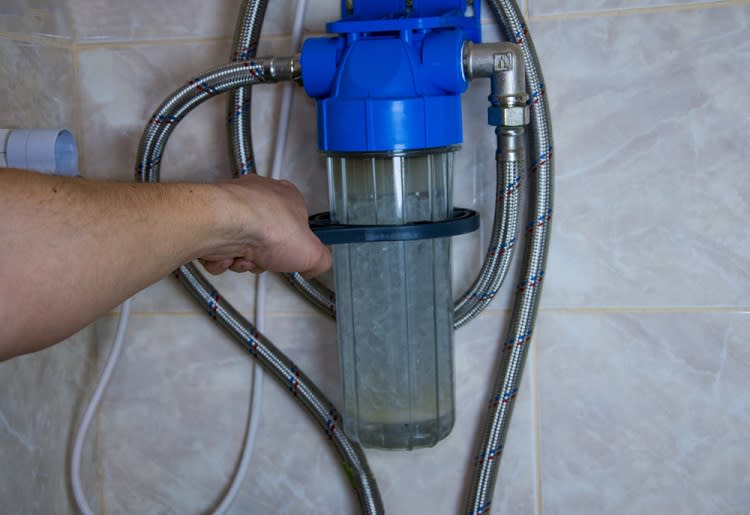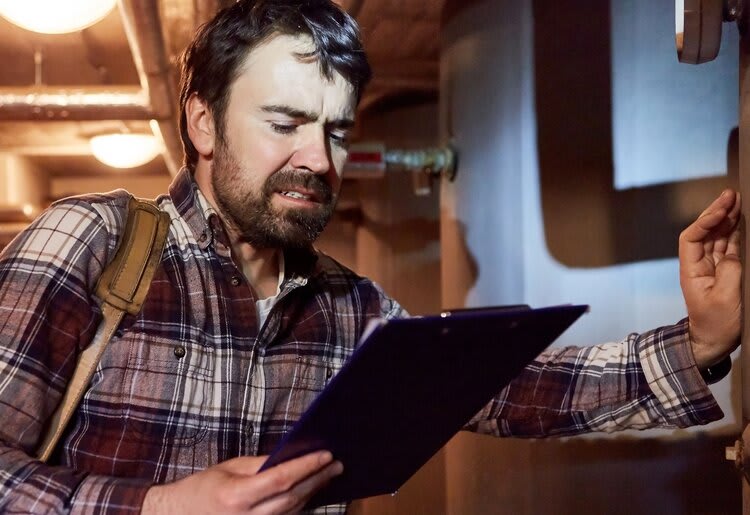In order to keep your water softener running properly—and stay compliant with your home warranty—it's important to do regular maintenance on it.
Here are 10 maintenance tips from a certified plumber that will help keep your water softener in top condition.
» Looking for a reliable home warranty plan? Check out our top picks for the best home warranty companies.
1. Check the Manufacturer’s Recommendations
The first step in maintaining your water softener is to check the manufacturer's recommendations. There are many different types of water softeners, and each model is different, so it's important to consult your manual to see what specific maintenance tasks need to be performed and how often.
Doing so will also help keep your home warranty plumbing coverage active, so you can minimize any out-of-pocket costs you have to pay for repairs.
2. Test Your Water Hardness Regularly
One of the best things you can do to keep your water softener in good working order is to test your water hardness regularly. You can purchase a water testing kit at your local hardware store or have your water tested by a certified plumber.
Testing your water will help you to determine if your water softener is working properly and if it needs to be adjusted.
» Learn more about how to take better care of your plumbing.

3. Clean the Brine Tank Regularly
It is also important to clean the brine tank on a regular basis. The brine tank is where the salt is stored in the water softener.
Over time, sediment can build up in the bottom of the tank, reducing the efficiency of the water softener. To clean the brine tank, simply add a few gallons of hot water and let it sit for an hour or so before draining.
4. Use Vinegar to Clean the Resin Beads Quarterly
In addition to physically cleaning the brine tank, you should also use vinegar to clean the resin beads inside the tanks quarterly. This will help remove any mineral buildup that could clog the beads and prevent them from working properly.
» Try these non-toxic tricks plumbers use to eliminate drain odor.
5. Check for Leaks Regularly
Leaks can occur in any part of the plumbing system, but they are particularly common in water softeners. This is because the high pressure required to push the softened water through the pipes can cause fittings and connections to loosen over time. Be sure to check for leaks on a regular basis and tighten any loose fittings or connections.
If you notice any wet spots or dripping water around your softener, have it repaired as soon as possible. Leaks can cause water damage if they are not fixed promptly.
6. Replace the Salt When Needed
Another important thing to do is to check the salt level in your water softener regularly. Most water softeners have a salt reservoir that needs to be refilled on a regular basis. If the salt level gets too low, it can cause the water softener to stop working properly.
How often this needs to be done depends on how much softened water you use each day. As a general rule of thumb, you should replace the salt in your water softener every three months or so.
» Looking for a home warranty plan with a good quality-price ratio? Check out these American Home Shield alternatives.

7. Backwash the Filter Regularly
To keep your water softener working efficiently, you should backwash the filter on a regular basis. Backwashing the filter will remove any sediment or debris that has accumulated in it over time.
Depending on your manual's instructions, most filters should be backwashed at least once a month or once a quarter.
8. Replace the Filters as Needed
You should also replace the filters as needed. Depending on the type of filter you have, you may need to replace it every few months or every year. If you're not sure when to replace your filters, consult your owner’s manual or ask a certified plumber for advice.
It's also important to clean the filters on your water softener on a regular basis. This will help to remove any accumulated dirt or debris, and it will also help improve the efficiency of the softener. Most filters can be cleaned with a simple hose or brush, but some may need to be replaced if they are damaged beyond repair.
» Not sure how you'll cover these repairs? Invest in one of the best home warranties for homeowners for better peace of mind.
9. Inspect Hoses and Seals Monthly
It is also important to inspect the hoses, seals, and valves on your water softener on a regular basis. These components can become worn out over time, leading to leaks or other problems.
It’s best to catch any potential issues before they cause major damage. If you notice any cracks or leaks in these components, you will need to have them replaced as soon as possible.
10. Have Your Water Softener Serviced Annually
Have your water softener serviced by a certified plumber on a regular basis. Plumbers can clean and inspect your water softener and make any necessary repairs or adjustments.
Most manufacturers recommend servicing your water softener every six months to one year. This will ensure that all of the moving parts are working properly and that there are no hidden issues that could cause problems down the road.
» Learn more about the bathroom appliances and systems covered by home warranty.

Take Away
Water softeners are an important part of many homes' plumbing systems due to their numerous benefits. By following these 10 maintenance tips from certified plumbers, you can keep your home's water softener running properly for years to come!
» Looking for a home warranty for your water softener? Check out First American Home Warranty and Select Home Warranty.

